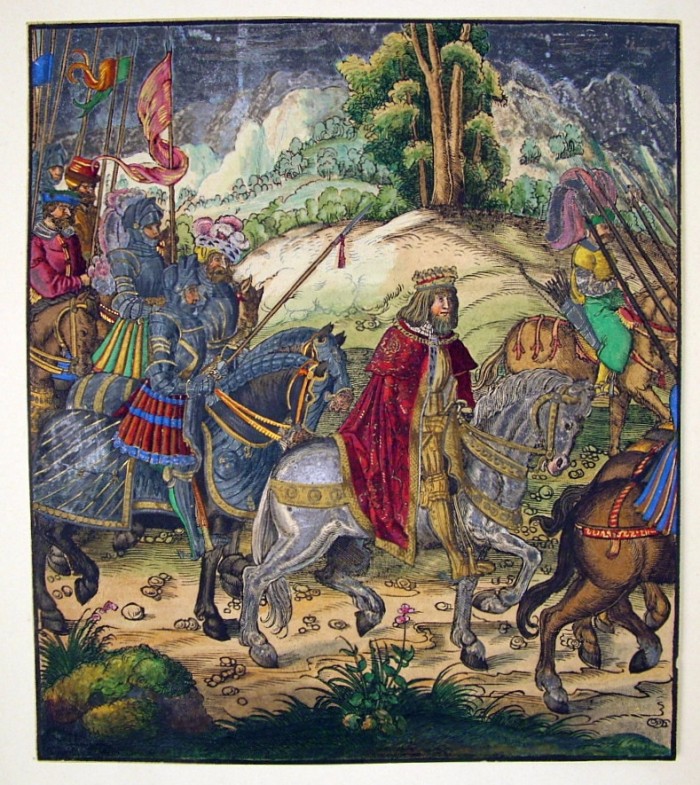The Old White King on the Journey to His Bride – Painted Woodcut
Hans Burgkmair (1459-1519), The Old White King on the Journey to His Bride, painted woodcut, 1514-16. Reference: Bartsch 80-(224) 6, from the History of Emperor Maximilian I. In excellent condition, on old laid paper, 8 3/4 x 7 1/2 inches.
A brilliantly colored impression, with the colors vibrant and fresh.
The History of the Weisskunig (White King) is an autobiography in the style of an illustrated novel without words. Although it is the story of Emperor Maximilian I all the characters have symbolic names. The White King is the name Maximilian chose for himself, as it both stands for whiteness (purity) and is associated with the word for wisdom (Weisheit).
Hans Burgkmair, the eminent Augsburg painter and printmaker who was in effect Maximilian’s official court artist, was instrumental in the development of the chiaroscuro print, and Landau and Parshall argue that he was in fact the inventor of the tone block (cf. The Renaissance Print, David Landau & Peter Parshall, Yale, 1996). Of course the present print was printed (most likely by his key collaborator Jost de Negher) in black and white, and then painted; despite the development of colored printmaking, very early woodcuts such as those of Burgkmair’s would frequently be painted contemporaneously as well as later (and David Landau has confirmed that the coloring of this print is contemporary).
Relatively few painted old master prints have survived and are seen today either in museum exhibits or in collections, and it perhaps their rarity which has made them a bit of an enigma to those in the art world. The superb exhibit of painted prints and its accompanying volume (Painted Prints: The Revelation of Color, Susan Dackerman, Baltimore, 2003) has served to undergird the centrality and value – both historical and aesthetic – of the old master painted print.
This is one of a bound group of old master prints, including other woodcuts by Burgkmair, Hans Weiditz, Hans Schaufelein and others. Many of these prints have the mark of the eminent collector Karl Edward von Liphart (Lugt 1651) verso. We are currently doing research on the collection so it is not on the market as yet.
